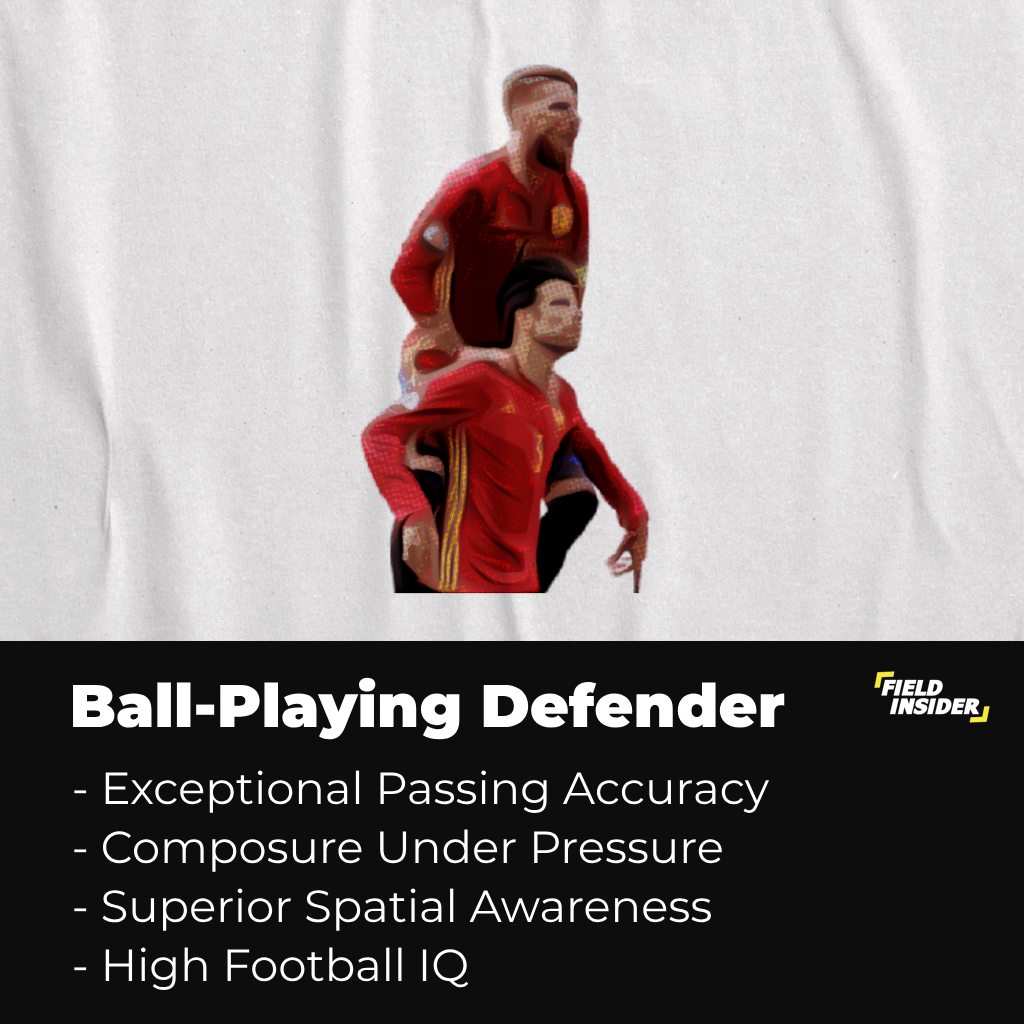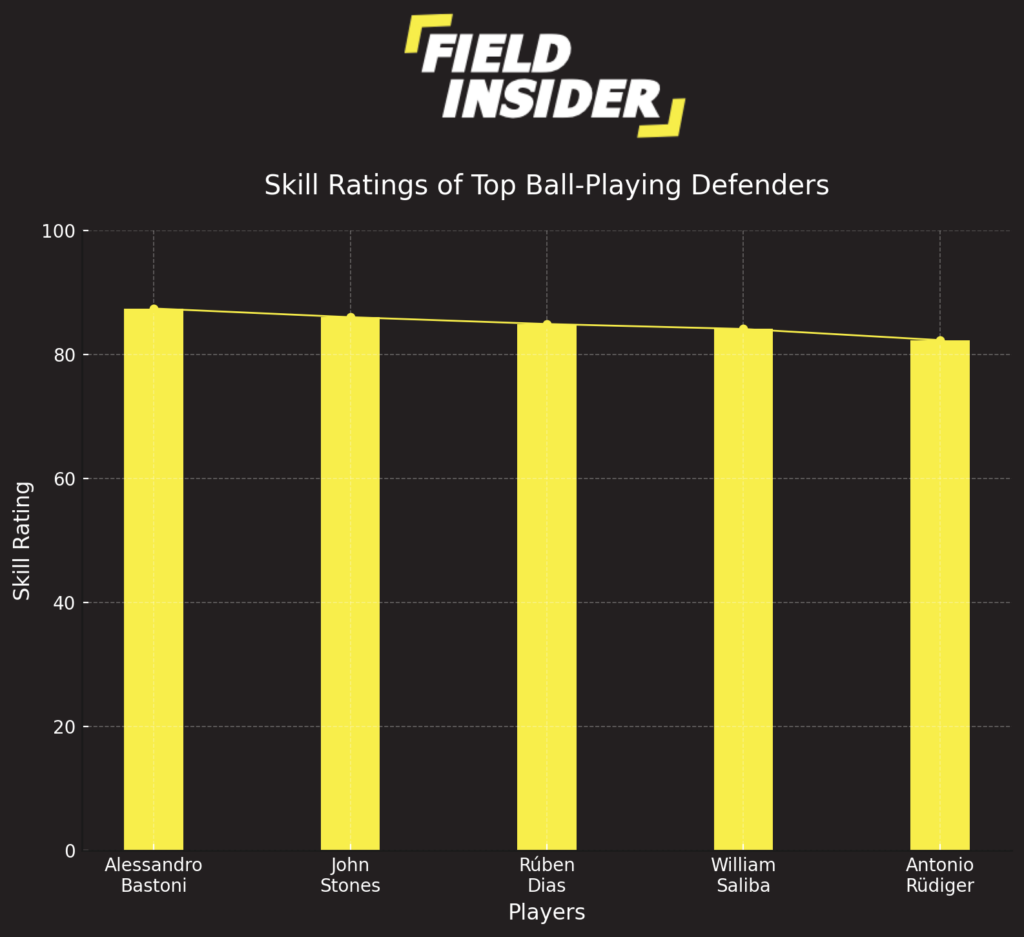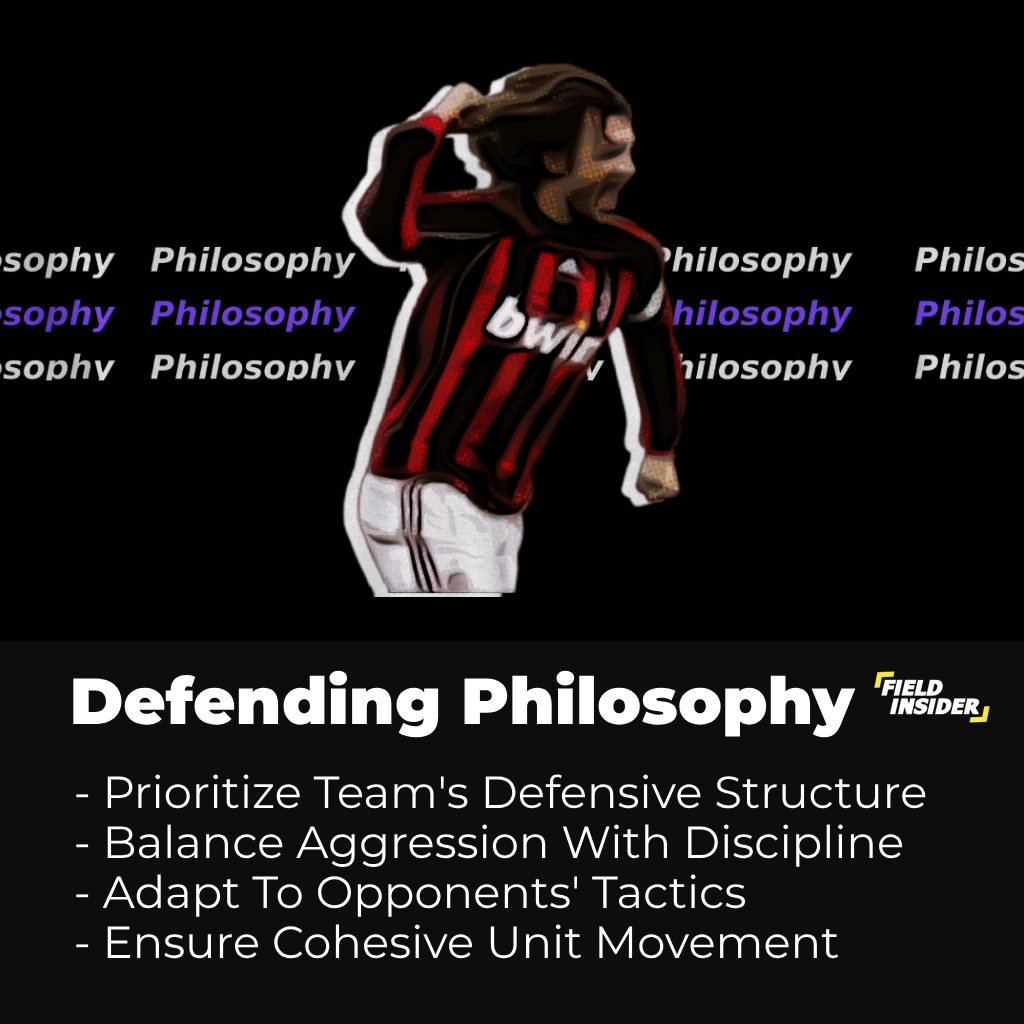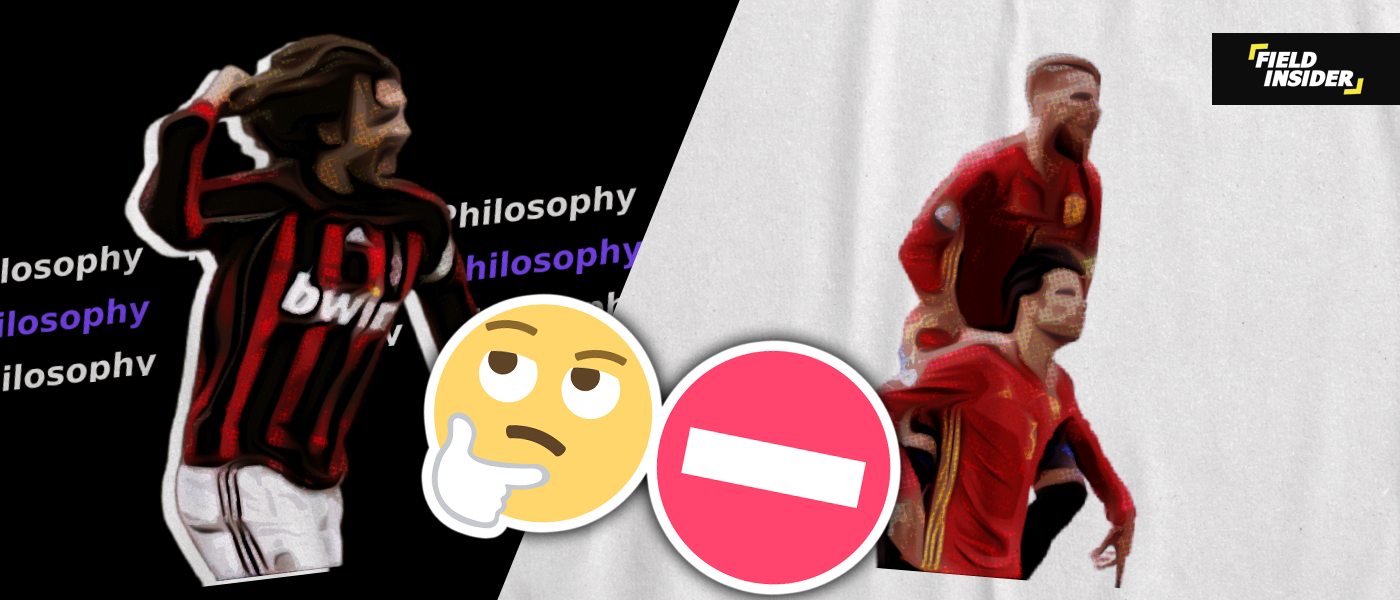Ball-Playing Defender vs No-Nonsense Defender: The Difference
In the dynamic world of modern football, the roles of defenders have diversified, reflecting the tactical nuances and strategic complexities of the game. This article examines the contrasting styles of no-nonsense and ball-playing defender, shedding light on their unique contributions to team dynamics.
As the game evolves, understanding these roles becomes pivotal for teams striving to optimize their defensive strategies and achieve success on the pitch. This exploration underscores the importance of adaptability and specialized skills in navigating the competitive landscape of football.
Key Takeaways
| Aspect | Ball-Playing Defender | No-Nonsense Defender |
|---|---|---|
| Definition & Characteristics | Skilled with the ball, excels in passing and maintaining possession. | Focuses on clearances, tackles, and aerial duels. |
| Technical Skills & Attributes | Superior ball control, passing accuracy, and tactical awareness. | Physical strength, marking, and tackling abilities. |
| Famous Examples | Gerard Piqué, Virgil van Dijk. | Giorgio Chiellini, Tony Adams. |
| Role & Tactical Implications | Initiates attacks from the back, supports midfield. | Prioritizes defensive solidity, often employed in a more traditional defensive setup. |
| Impact on Team Dynamics | Enhances ball retention and fluidity in transition, requires a technically skilled team to maximize impact. | Adds grit and resilience, effective in teams that employ a direct style of play or counter-attacking. |
| Adaptability | Best suited for possession-based systems. | Versatile across various styles, especially effective against physically imposing forwards. |
| Future Prospects | Increasing demand in modern football philosophies. | Remains vital for teams seeking balance and defensive strength. |
Understanding Defender Roles in Soccer
In the diverse world of soccer, defenders play pivotal roles. Their styles and skills significantly influence a team’s defensive strategy and overall game plan. This section delves into the contrasting styles of ball-playing defenders and no-nonsense defenders, highlighting their unique attributes and contributions.
Ball-Playing Defender: Definition and Characteristics
A ball-playing defender is known for skillful play and strategic involvement in both defense and attack. These defenders are pivotal in building play from the back, using their technical abilities to navigate through opposition pressure.

Their role transcends traditional defensive duties, integrating them deeply into the team’s offensive tactics. By maintaining possession and accurately distributing the ball, they set the pace of the game, showcasing a blend of tactical intelligence and technical proficiency.
No-Nonsense Defender: Definition and Key Traits
No-nonsense defenders prioritize defensive solidity and physicality over technical flair. Their primary objective is to clear any threat, favoring direct methods to maintain the team’s defensive integrity.
This style of defending is characterized by robust tackling, aerial dominance, and a relentless commitment to protecting the goal. These defenders embody the traditional values of resilience and toughness, providing a steadfast barrier against opposing attacks.
Technical Skills and Attributes Required
The effectiveness of ball-playing defenders and no-nonsense defenders hinges on a distinct set of technical skills and physical attributes.These competencies are foundational to their roles on the field. They determine how players contribute to the team’s defensive and offensive phases.
Ball-Playing Defender: Technical Skills and Attributes
Technical Skills Required
Ball-playing defenders must possess exceptional passing accuracy, composure under pressure, and the ability to read the game. They initiate plays, requiring accurate passing, dribbling skills, and spatial awareness to navigate through the opposition.
Mastery over ball control and a high football IQ are indispensable. They enable players to make split-second decisions that transition defense into attack.
Attributes Required
Beyond technical prowess, ball-playing defenders need a blend of physical and mental attributes. Agility and pace allow them to cover ground quickly, essential for participating in build-up play and returning to defensive positions.
Mentally, they must be resilient and confident, capable of maintaining possession and executing plays even under intense pressure.
No-Nonsense Defender: Technical Skills and Attributes
Technical Skills Required
No-nonsense defenders are characterized by their exceptional tackling, marking, and aerial abilities. Their primary objective is to neutralize the threat posed by attackers, requiring impeccable timing in tackles, proficiency in one-on-one situations, and the strength to win aerial duels.
The ability to clear the ball safely and effectively is fundamental. Often under pressure, it minimizes the risk of conceding goals from defensive errors.
Attributes Required
Physically, no-nonsense defenders are typically strong and imposing, able to assert their presence in the defensive third. Stamina and resilience are vital, as they must be prepared to engage in physical battles throughout the match.
Mentally, they require a high level of concentration and discipline. This maintains positional awareness and the courage to contest every ball, often risking injury for the team.
Unveiling the Elite: Skill Ratings of Top Ball-Playing Defenders
In the realm of modern football, the role of ball-playing defenders has become increasingly pivotal. These players are not just expected to thwart attacks but also to initiate play from the back, blending defensive prowess with creative passing.

The accompanying bar chart showcases the current year skill ratings for the top five ball-playing defenders.
Leading the pack is Alessandro Bastoni, with an impressive rating of 87.4. John Stones follows closely with a rating of 86.0. It reflects his integral role in Manchester City’s defensive strategy and build-up play.
Rúben Dias, another key figure in Manchester City’s backline, shows a commendable rating of 84.9. His tactical awareness and passing accuracy make him a quintessential ball-playing defender.
William Saliba, with a rating of 84.1, represents the new generation of defenders who are comfortable with the ball at their feet, contributing significantly to Arsenal’s playstyle.
Antonio Rüdiger rounds off the list with a rating of 82.3. Despite being last on this list, his rating is a testament. It reflects his solid defensive capabilities and knack for launching attacks from deep.
These ratings not only reflect their defensive acumen but also their ability to influence the game’s dynamics from the rear, marking them as integral components of their respective teams.
Notable Ball-Playing and No-Nonsense Defenders
Here’s a table that presents examples of notable “Ball-Playing” and “No-Nonsense” defenders in soccer, reflecting their distinct playing styles:
| Defender Name | Style | Club(s) | National Team | Notable Features |
|---|---|---|---|---|
| Virgil van Dijk | Ball-Playing | Liverpool, Southampton, Celtic | Netherlands | Strong passing ability, composure, ability to play out from the back |
| Gerard Piqué | Ball-Playing | Barcelona, Manchester United | Spain | Excellent ball control, passing, and ability to initiate attacks |
| Mats Hummels | Ball-Playing | Borussia Dortmund, Bayern Munich | Germany | Strong in build-up play, precise long balls, and positioning |
| Aymeric Laporte | Ball-Playing | Manchester City, Athletic Bilbao | Spain | Accurate passing, good with both feet, strong in aerial duels |
| Paolo Maldini | No-Nonsense | AC Milan | Italy | Legendary tackling, positioning, and leadership |
| Franco Baresi | No-Nonsense | AC Milan | Italy | Excellent man-marking, anticipation, and intelligence |
| Tony Adams | No-Nonsense | Arsenal | England | Strong leadership, aerial ability, and defensive organization |
| Carles Puyol | No-Nonsense | Barcelona | Spain | Fierce tackler, great in air, epitome of bravery and leadership on the field |
| Sergio Ramos | Hybrid (Both) | Real Madrid, Paris Saint-Germain, Sevilla | Spain | Known for his aggressive defending, goal-scoring ability, and versatility in playing both ball-playing and tough tackling |
| Giorgio Chiellini | Hybrid (Both) | Juventus, Livorno, Fiorentina | Italy | Combines traditional defensive solidity with ability to start attacks, known for his tough tackling and leadership |
Role on the Field and Tactical Implications
The roles of ball-playing defenders and no-nonsense defenders come with distinct tactical implications that significantly influence a team’s playing style and strategy. Understanding these roles is crucial for grasping how modern teams structure their defense and transition into attack.
Ball-Playing Defender: Role and Tactical Implications
Role on the Field
Ball-playing defenders are pivotal in teams that prioritize maintaining possession and building play from the back. Their role extends beyond traditional defensive duties, as they are often involved in initiating offensive plays.
This requires them to be positioned to receive the ball under pressure. They must distribute it effectively, making them key to the team’s ball movement and possession strategy.
Tactical Implications
The presence of a ball-playing defender allows a team to implement a more fluid, possession-based style of play. This approach relies on the defender’s ability to make precise passes, navigate through the opposition’s press, and even drive the ball into midfield areas.
The tactical flexibility offered by such a player enables teams to exploit spaces across the entire pitch, making it difficult for opponents to predict and counter their moves. The incorporation of ball-playing defenders is evident in formations like the 4-3-3 or 4-2-3-1, where their skills can be maximized.
No-Nonsense Defender: Role and Tactical Implications
Role on the Field
The no-nonsense defender’s primary role is to disrupt the opposition’s attacks, clear the ball from dangerous areas, and maintain defensive solidity.
These defenders are less involved in the team’s offensive play, focusing instead on ensuring that the team remains organized and compact in defense. Their positioning is critical, often closer to their own goal, to effectively challenge attackers and make crucial interventions.
Tactical Implications
Employing a no-nonsense defender is particularly effective against teams that excel in high-tempo, attacking football. This defensive approach emphasizes physicality, aerial prowess, and the ability to make decisive clearances.
It’s a style that complements counter-attacking tactics well, as seen in formations like the 5-3-2 or 4-4-2, where defensive stability can quickly transition into rapid attacking opportunities.
Impact on Team Dynamics and Playing Philosophy
The inclusion of either a ball-playing defender or a no-nonsense defender significantly influences a team’s dynamics and underlying playing philosophy. Their impact extends beyond individual contributions, affecting the team’s cohesion, tactical flexibility, and psychological makeup.

Ball-Playing Defender: Impact on Team Dynamics
Encourages a Fluid, Attacking Style of Play
The presence of ball-playing defenders facilitates a possession-based approach. It encourages teams to maintain control of the ball and build attacks from the back.
This style promotes fluidity and movement, requiring midfielders and attackers to constantly find space and create passing options. It instills a mindset focused on creativity and innovation, as the team seeks to outsmart opponents through skillful play and tactical awareness.
Influences Team Cohesion and Communication
Ball-playing defenders are often seen as the initiators of the team’s play, necessitating a high level of coordination and understanding with teammates.
Their role demands precise communication, as they must constantly assess the best options for advancing the ball while ensuring the team maintains its structural integrity.
No-Nonsense Defender: Impact on Team Dynamics
Solidifies Defensive Resilience
No-nonsense defenders are the backbone of a team’s defensive strategy, providing stability and reliability at the back. Their approach prioritizes defensive solidity, reducing the likelihood of errors that could lead to conceding goals.
This defensive assurance allows midfielders and attackers to focus on their roles. They need not worry constantly about defensive vulnerabilities, fostering a confident pursuit of goals.
Enhances Psychological Edge
The physicality and determination of no-nonsense defenders can have a demoralizing effect on opponents. Their commitment to contesting every ball and engaging in physical duels sends a message. It reflects the team’s resilience and fighting spirit.
This psychological edge can be crucial in tight matches, where the will to win and the ability to intimidate can tip the balance in favor of the team.
Adaptability in Different Game Situations
The adaptability of ball-playing and no-nonsense defenders in various game situations illustrates the dynamic nature of football, where tactical flexibility can be as crucial as technical skill. This adaptability not only speaks to the versatility of the players but also to the strategic depth teams must navigate to succeed.
Ball-Playing Defender: Adaptability in Different Game Situations
Effective in Teams that Dominate Possession
Ball-playing defenders excel in teams that control the game through possession, enabling these teams to implement a proactive style of play.
Their skill set is particularly advantageous against opponents that employ a high press, as their ability to maintain composure and find creative passing solutions can help bypass the press and exploit the space behind.
Strategic Advantage in Breaking Down Defensive Blocks
In matches where opponents adopt a deep defensive block, the ball-playing defender’s capacity to contribute offensively becomes a key asset.
Their ability to distribute the ball accurately and venture into midfield areas can create numerical advantages, disorganize defensive structures, and open up opportunities for scoring.
No-Nonsense Defender: Adaptability in Different Game Situations
Essential in Counter-Attacking and Defensively Focused Strategies
For teams that prefer a reactive approach, focusing on solid defense and quick transitions, no-nonsense defenders are indispensable.
Their ability to clear the ball effectively and win aerial duels makes them pivotal in matches where the team absorbs pressure and relies on counter-attacks to threaten the opposition.
Crucial in High-Pressure Situations
In tightly contested matches or scenarios where protecting a lead becomes paramount, the no-nonsense defender’s resilience and defensive prowess come to the fore.
Their straightforward approach to defending can help stabilize the team, reduce risks, and ensure that the team remains compact and difficult to break down.
Future Prospects for Both Styles of Defenders
As football continues to evolve, the future prospects for ball-playing and no-nonsense defenders are shaped by the game’s changing tactics, player development philosophies, and technological advancements.

Understanding these prospects is crucial for predicting how defensive strategies and player profiles might change in the coming years.
Ball-Playing Defender: Future Prospects
Increased Demand in Modern Football
The trend towards possession-based, attacking football has elevated the importance of defenders who can contribute to the team’s offensive play.
Ball-playing defenders are likely to see increased demand as teams seek to integrate their defensive and attacking phases more seamlessly. Their ability to initiate attacks from the back and support midfield play aligns with modern football. It emphasizes fluid and dynamic play.
Enhanced Role Beyond Defense
The future may see ball-playing defenders taking on even more significant roles within their teams, participating actively in midfield areas and contributing to goal-scoring opportunities.
As player development programs continue to emphasize technical skills across all positions, the distinction between defenders, midfielders, and attackers could become less pronounced, leading to more versatile, multi-dimensional players.
No-Nonsense Defender: Future Prospects
Valued for Tactical Flexibility
Despite the shift towards more technically skilled defenders, the no-nonsense defender will remain a vital component of tactical strategies, especially for teams facing high-pressure, attacking opponents.
Their ability to provide defensive stability and win aerial duels is crucial. It is especially important in matches where resilience and robust defending are paramount.
Evolution and Adaptation
No-nonsense defenders may need to adapt by enhancing their technical abilities and tactical understanding to remain competitive.
As the game’s physical and technical demands continue to rise, these defenders will be challenged to develop skills that allow them to contribute to their team’s playing style more broadly, without compromising their defensive strengths.
Conclusion
In conclusion, the contrasting roles of ball-playing and no-nonsense defenders highlight the tactical diversity and strategic depth inherent in modern football. As the game continues to evolve, the demand for defenders who can adapt to various game situations has never been higher.
This nuanced understanding of defensive roles not only enriches our appreciation of the sport but also opens up exciting prospects for the development of football tactics and player profiles in the years to come.








